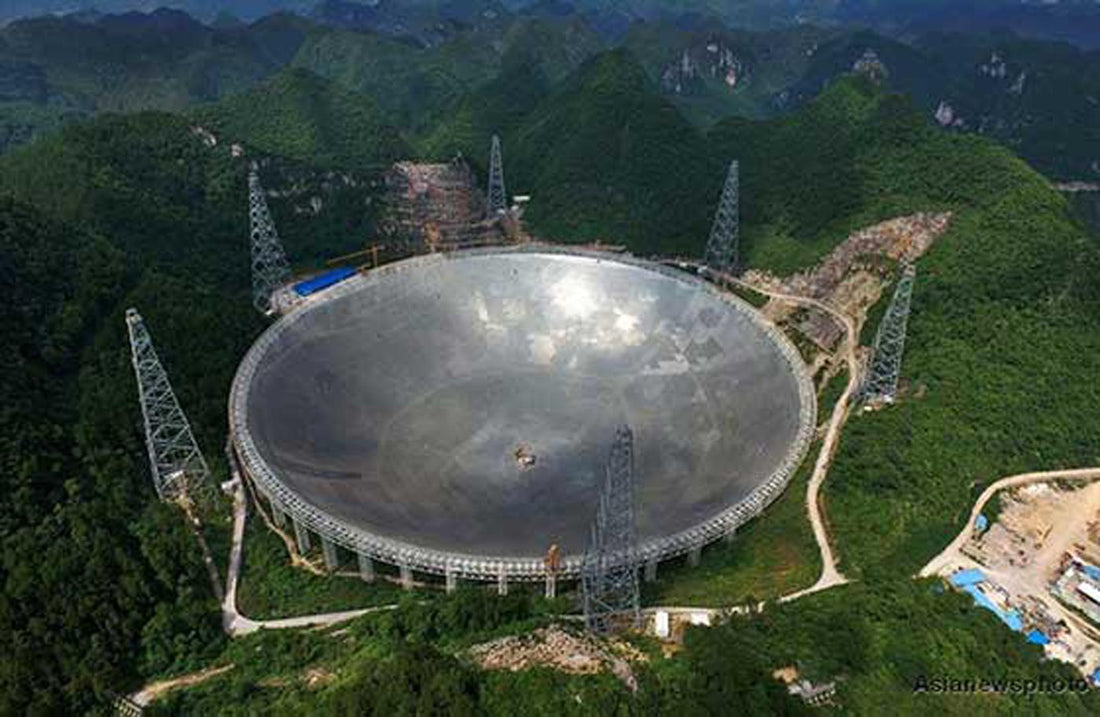
China's Half-Kilometre Diameter Telescope Opens Doors To 'Stranded' Arecibo Scientists
Share
While we come to terms with the tragic loss of the Arecibo, a little Christmas present has surprised us.
Following the collapse of the Arecibo Observatory dish, China has opened the doors of the largest radio telescope in the world to international scientists for the first time. Namely, the scientists from the Arecibo Observatory who have no place for their decades of research and data.
In Pingtang, Guizhou province rests the Five-hundred-metre Aperture Spherical Telescope (FAST), a behemoth dish that eclipses even the Arecibo in size.
Up until the AU$230,779,500.00 construction of FAST in 2016, Arecibo stood as the biggest dish on Earth for 53 years.
And following the twin cable failure of the 900-ton suspended deck at Arecibo this year, FAST is welcoming Arecibo's former inhabitants.

"Our scientific committee aims to make FAST increasingly open to the international community," said Wang Qiming, FAST's chief inspector at the operations and development centre.
Requests from foreign scientists to use the FAST dish for their research are open for 2021.
And special mind may be given to those formerly at Arecibo.
But with its massive 500m diameter dish, FAST is both larger and more sensitive than its Puerto Rican rival.
"We drew a lot of inspiration from its [Arecibo's] structure, which we gradually improved to build our telescope," Qiming said.
China has poured resources into its scientific endeavours to be more self-sufficient and aims to rely less on foreign technology.
Despite being the most populous country on Earth, China has only managed one Nobel prize, awarded to chemist Tu Youyou in 2015.
China has big plans to change this by pouring billions into its military-run space program. With the aim of becoming a leader in artificial intelligence, space, clean energy and robotics by the year 2035.
John Dickey, professor of physics at the University of Tasmania said the turnaround for China so far has been impressive.
"China is certainly a global centre for scientific research, at the same level as North America or Western Europe," he said.
"The community of researchers is as advanced, as creative, and as well organised as in any advanced nation in the world."
Chinese science policy expert, Denis Simon, added that "China was viewed as an innovation laggard," only a few years ago.
"More and more discretion and intellectual freedom have been given to the scientific and engineering community to explore new ideas and take bigger risks in the research environment. The risk-averse culture that was once predominant has given way to a more entrepreneurial culture," said Simon.
Since 2018, China's collective mentality has shifted to allow scientists and engineers to control state-funded projects.
"In many ways, the competition between China and the US is about a race for talent—and this race promises to build momentum as the competition between the two countries heats up," he added.

FAST began operations in January this year and is surrounded by a 5km "radio silence" zone where cellphones, computers and other devices are not allowed. So far, FAST has spied on celestial bodies like pulsars (rapidly rotating dead stars) to learn more about their nature.
Radio telescopes like Arecibo and FAST use antennas and radio receivers to detect radio waves from sources in space. Notable sources include stars, entire galaxies and even black holes.
Radio telescopes are used to send out radio signals that reflect radio light from objects in our solar system - like planets - to see what information returns to us.
Scientists will use FAST to study the universe and alien worlds for the perfect conditions called the "Goldilocks zone", where the odds of experiencing extraterrestrial life is high.
For more information about FAST, you're already on the internet so Google it.
#Space_Aus




